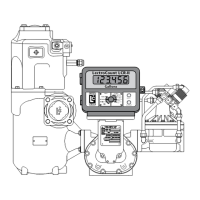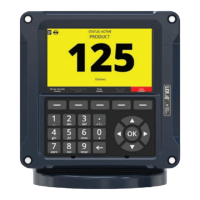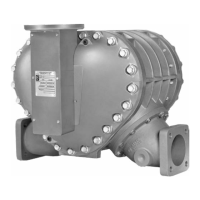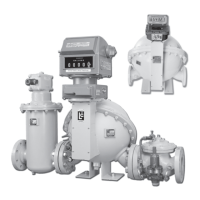32
Environmental Sealing Guidelines
The LCR-II includes sensitive electronic components, including a micro-controller that can be damaged by the
presence of moisture. Therefore, it is essential that all conduit ports, the cover, and the shaft seals be adequately
sealed by the installer to ensure watertight integrity. The conformal coating on the board and a moisture-absorbing
desiccant inside the enclosure mitigates the problem of corrosion due to moisture, but these measures only protect
the board from small amounts of moisture trapped inside the enclosure when the lid is closed in humid conditions.
1. Conduit Entrances
of the cable and the elastometric seal around the cable sheath is compressed onto the cable. Use only one cable per cable
the LCR-II with a silicone rubber sealant, such as RTV, to prevent moisture from running down the conduit into the enclosure.
2. Cover Seals
cover screw securely.
3. Shaft Seals
Units with internal pulsers have an O-ring around the pulse encoder drive shaft that extends through the bottom of the LCR
the switch bushing.
Close and Seal the Unit
be environmentally sealed to protect the electronics against the elements. The LCR-II must also be sealed by a
1. Secure the cables behind the LCR-II and the cables in the cab with cable ties.
82575). Read and follow the directions of the Environmental Sealing Guidelines below.
housing tab. Read and follow the directions of the Environmental Sealing Guidelines below.
4. Seal the cover bolt and the switch plate bolts with a wire/lead seal. See Weights & Measures Seals on pg. 33.
After the LCR-II is powered correctly, continue on to the LectroCount LCR-II Setup and Operation manual to setup the LCR-II for
operation. You will want to setup and test the LCR-II before closing and sealing the unit.
IMPORTANT: Before Sealing the LCR-II
Any water or moisture damage to the LCR-II as result of improper sealing will not be covered under the product warranty.
Sealing the LCR-II is the Responsibility of the Installer
POST INSTALLATION

